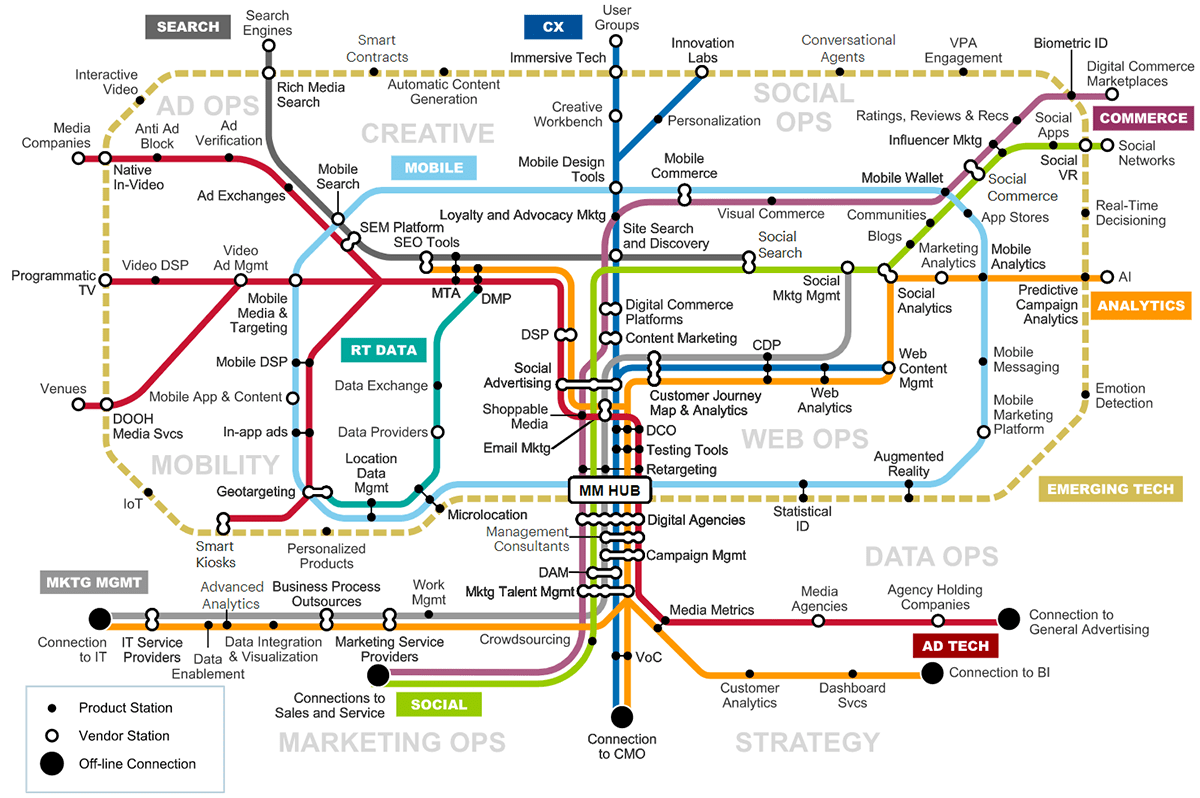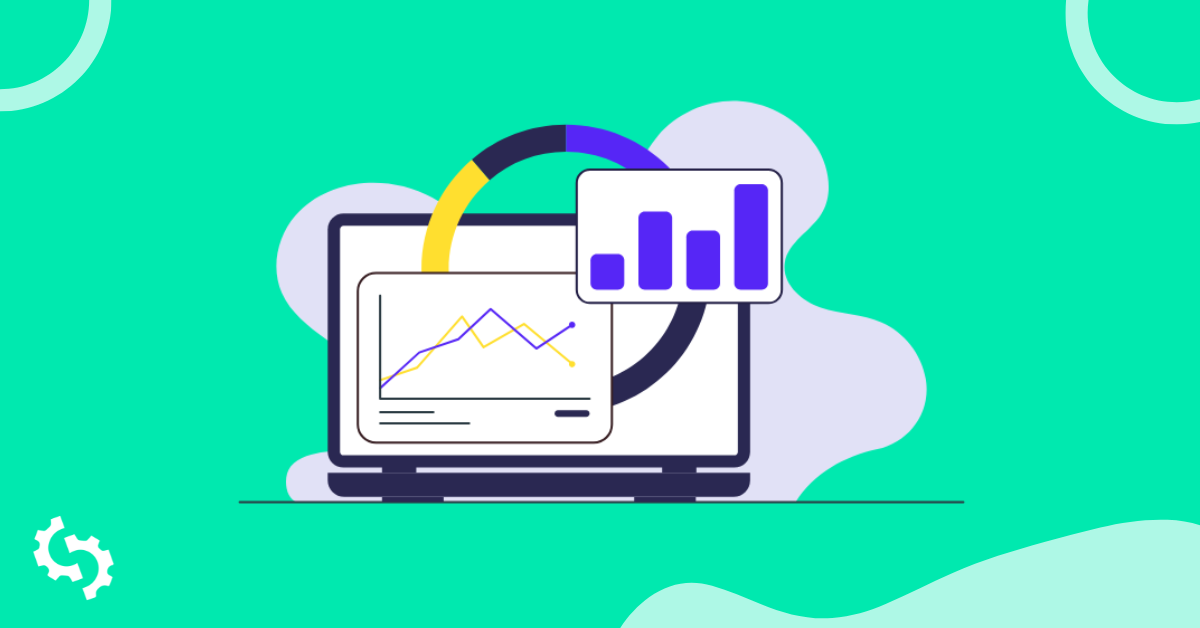
The biggest challenge facing most businesses is attracting new customers/clients and growing revenue. SMB Group surveyed over 400 small businesses in the US and found this to be the case. At the heart of that challenge is marketing effectiveness. Marketing plays a crucial role in the performance of any organization and it's ability to grow and succeed.
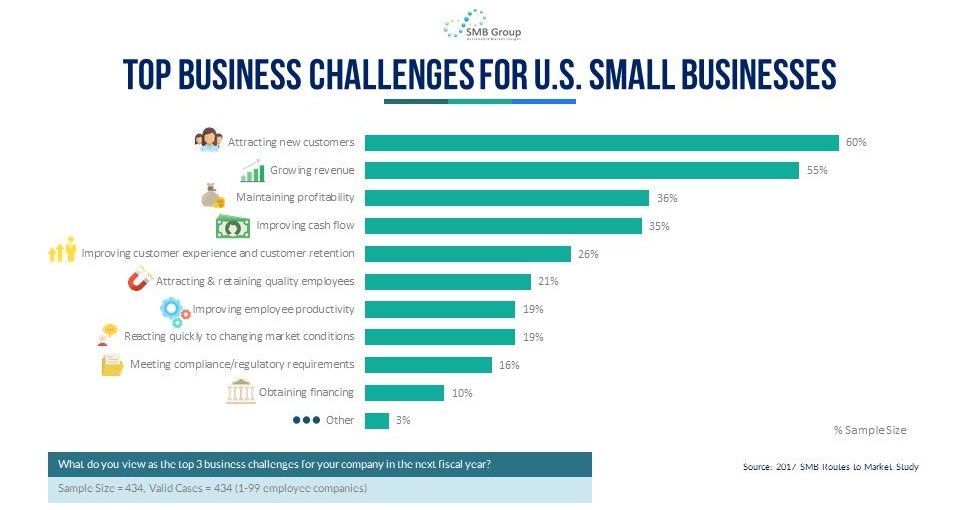
But marketing is hard and there are many things that have the potential to go wrong. Digital marketing channels like paid search and paid social offer marketers great potential to execute low cost activity with the ability to measure results in real-time. Other digital marketing channels like SEO and organic social are longer term investments and need a more defined mid to long term strategy.
Here at SEOptimer we make SEO tools for marketers and have the pleasure to work with thousands of customers around the world. This gives us unique insights into what challenges they face as the digital marketing landscape continually evolves. In this article we spoke to several agency-side and brand-side marketers to understand their current marketing challenges and most importantly, how to overcome them.
1. Deciding Where to Start
Inexperienced marketers or business owners often describe the feeling of being completely overwhelmed by the plethora of digital marketing channels and tactics. The reason for this is the constant fragmentation of the digital marketing eco-system with more walled-gardens and niche communities than ever before.
Gartner tried to make sense of the digital marketing landscape by mapping out a Digital Marketing Transit Map. While this is more of an enterprise visualization, it goes to show the level of complexity that underpins the interconnectedness of digital marketing channels these days:
As a result of the technology fragmentation, users attention spans are becoming more limited since they are split across an array of apps, sites and channels. This often makes marketers feel like they need to be present and active in many channels that it becomes almost impossible to maintain a base level of activity.
For a new organization embarking on their digital marketing journey, deciding how to allocate resources and spend their first $1 will likely be the biggest immediate challenge they face given the worlds of opportunity across search, social, email, PPC, affiliate, content, the list goes on.
How to overcome this marketing challenge
Start with one channel, then expand: Most organizations starting out need a website, so that is obviously the first place to start. But the next logical step is to think about how to attract traffic to that website. If increased traffic equals increased sales/revenue, you'll need to focus on a marketing channel that is well-proven at driving traffic.
Secondly you need to think about when you and your stakeholders expect to see tangible results. Is there an immediate need to gain website traffic? If so, paid search or paid social is probably a reliable place to start. But if the results can wait and there's agreement to invest in the longer term, then SEO and organic social might be a better place to start.
Neil Patel suggests starting with one channel and expanding once you've achieved a level of consistent results however he puts the emphasis on the channel-customer fit:
"The super simple solution is to start marketing wherever your customers are."
Neil also included a poll conducted by Buffer which asked startups what marketing channels they utilize. In a nice coincidence for Buffer, "social media" came up on top:
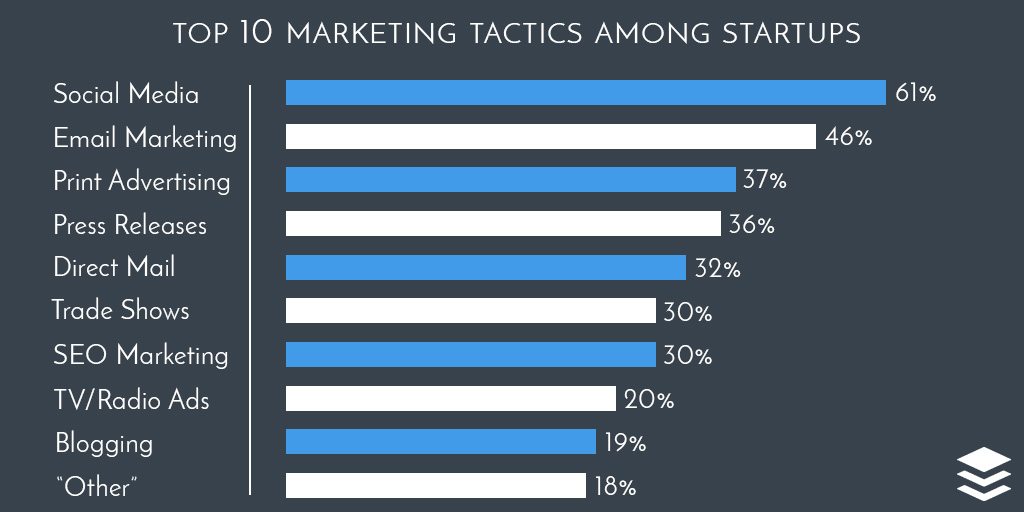
The important thing is to focus on one channel at a time and not be drawn in to fighting a multi-channel battle with limited resources on day 1. Prove efficacy first, then expand to other channels.
2. Reporting and Communicating ROI
Reporting goes hand in hand with marketing. Without proper reporting there's no way to understand the impact your marketing activities are having on the business. So for that reason, marketing reports are not a nice to have, they are an absolute mandatory.
Furthermore, communicating Return on Investment (ROI) to clients or stakeholders is a critical objective of your marketing reports. Without clearly communicating ROI each month, your marketing activities may be derailed by frustrated stakeholders.
Jason Lavis, Managing Director at digital agency Out of the Box Innovations says that focusing on ROI-yielding activities is super important as organizations grapple with the current economic slowdown:
"Marketing is often seen as a discretionary spend in most industries due to the time lag in getting results. Struggling businesses will care more about sales. If they can't close deals, or make a per unit profit, more leads won't help them."
Without proper reporting, marketing will be seen as a cost centre and a drain on the business instead of being the enabler of growth. But reporting on your marketing activities is time consuming, error prone and tedious.
How to overcome this marketing challenge
Automate your marketing reporting: Don't waste hours of time creating reports yourself. Manually counting data, wrangling CSVs and making reports pixel-perfect are tasks that software can automate. For example, SEOptimer can generate beautiful PDF white label reports at the click of a button so that you can focus on the actual marketing activities for your website.

3. Planning and Budgeting
Most marketing activities start with a plan and a budget. Without these, you are really in the dark and it is almost impossible to get buy-in from stakeholders. A marketing plan with an itemized budget ensures everyone is on the same page around the objective, the activities and how the organization will value those activities.
But devising a marketing plan is a huge ongoing challenge for marketers given the changing nature of digital marketing. Anthony Mixides, Managing Director at digital agency Bond Media also highlights the difficulty with time since most plans and budgets are created far in advance. As we know with digital marketing, things change quickly, so a plan that was written a year ago is likely to be out-of-date today.
How to overcome this marketing challenge
Data-driven forecasting: The best way to prepare your marketing plan and budget for the future is to use data-driven forecasting. Anthony says your historical and present data are the most important input for forecasting:
"Make sure you have the right procedures in place to accurately record the performance data from past campaigns. You can then utilize it to do a linear analysis and add other scenarios or seasonalities to determine how your campaign might be impacted by future events."
4. Navigating the Privacy-First and Cookieless Future
The last 12-24 months has seen a huge upheaval in the data foundations which formed the basis of remarketing, lookalike targeting and conversion tracking.
The seismic event that turned the industry on it's head was Apple's iOS 14.5 update which included a new App Tracking Transparency (ATT) policy. This update gave iPhone users the power to opt-in to tracking on apps like Facebook, Instagram and indeed any iPhone app. Notice the default setting was opt-out, users had to opt-in.
iOS 14.5 was largely celebrated as a win for user privacy and the start of privacy-first design. But it was catastrophic for digital marketers with less than 10% of iOS users opting-in to tracking. This meant vastly limited app install objective ads, under-reporting pixel-based conversion tracking, declining custom audience numbers which had a knock-on affect of the quality of lookalike audiences.
Nate Amspacher, Founder of Tennessee-based digital agency Upstream Digital Marketing remembers the challenges in dealing with the immediate fallout from the iOS 14.5 update:
"We saw vast differences between what Facebook ads were reporting as conversions vs. the actual number of conversions that were made."
But many in the industry saw this as just the first move, with Android to implement something similar in 2022 and Chrome itself to ditch third party cookies altogether by 2024.
Paul Bradish, Digital Marketing Manager at Emergent Software acknowledges we're definitely in a new era - one where privacy is at the centre and more controls are in the hands of the consumer.
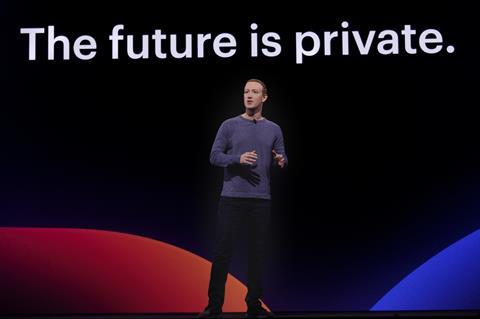
"We've also seen a surge in usage of privacy-first search engines and browsers such as DuckDuckGo and Brave. I fully expect this trend towards greater privacy and data controls to continue for years to come, especially as our European counterparts continue to lead the way."
How to overcome this marketing challenge
Start preparing for cookieless tracking: In relation to the iOS 14.5 impact on Facebook Ads, Nate recommends setting up Facebook Conversions API (CAPI). Meta recommends this not just for joining the dots post-iOS 14.5 but also in preparation for Chrome discontinuing third-party cookies in 2024. Nate has implemented CAPI and says:
"We have setup Conversions API now for a few clients and immediately noticed better tracking. I would recommend all brands and agencies set up CAPI if they are running conversion campaigns and want to see better data flowing into the ad platform."
Nate suggests checking out Andrew Hubbard's CAPI setup video for the step-by-step process on setting it up:
Nate also says CAPI is important not only to see better metrics in Ads Manager, but also to assist the learning phase on Conversion campaigns.
"Typically these types of campaigns need around 40-50 conversions per ad set to get the ad set out of learning and if you are only able to bring in 50% of your conversion data, you may never get out of the learning phase, and as a result, your ads will suffer."
Paul from Emergent Software also suggests that marketers need to embrace the cookieless future and build first-party data by asking customers or users to opt-in. Indeed weening yourself off third party data sources should be a priority between now and 2024.
"Be transparent. Utilize event and logged-in user tracking. Use Google Signals, customer data, and machine learning to create models which can then be used to provide personas and lookalike audiences for prospecting future leads."
5. Performing Regular Optimization
The dream for most marketers is to maintain a constant state of "test and learn" with continual optimization that drives the overall marketing strategy. The reality is that optimization is time consuming and actually quite difficult to execute on an ongoing basis.
But it's vitally important because what worked last month, might not work next month. Without optimization, it's likely that always-on (ie: business as usual) campaigns will slowly degrade in performance. This is a very general statement but it comes with the territory on digital marketing channels which are both highly competitive and constantly evolving.
Sarah Jameson is the Marketing Director of Green Building Elements and agrees that the challenge of continual optimization is tough for most organizations to achieve:
"Brands tend to get stuck using the exact same approach without optimizing their campaign to reach new potential customers."
How to overcome this marketing challenge
Segmentation and personalization: Sarah believes the solution lies in campaign segmentation. By delivering different campaigns to segmented audiences, this helps ultimately deliver more personalized communications. Whether you're utilizing owned channels like your website and email or paid channels like Google Ads or Facebook Ads, Sarah says:
"Consumers demand personalization at present, which means that your customers need to feel that your product or your service was designed to meet their needs."
6. Managing Algorithm Changes
Modern digital marketing channels are ruled by algorithms. Think of Google search or Facebook Newsfeed (or indeed any social media feed). These algorithms dictate the sorting of content that people see at any given second. Visibility as a business on these feeds is reliant on algorithms to value your content above competitor content.
Madi McMaster is the Director of Community Outreach at digital agency, BluShark Digital and says:
"Over the past two years, Google has been rolling out updates more frequently. In just the last year, we have seen the largest Local Update in over 3 years, a major content focus overhaul update, and 3 Broad Core Updates."
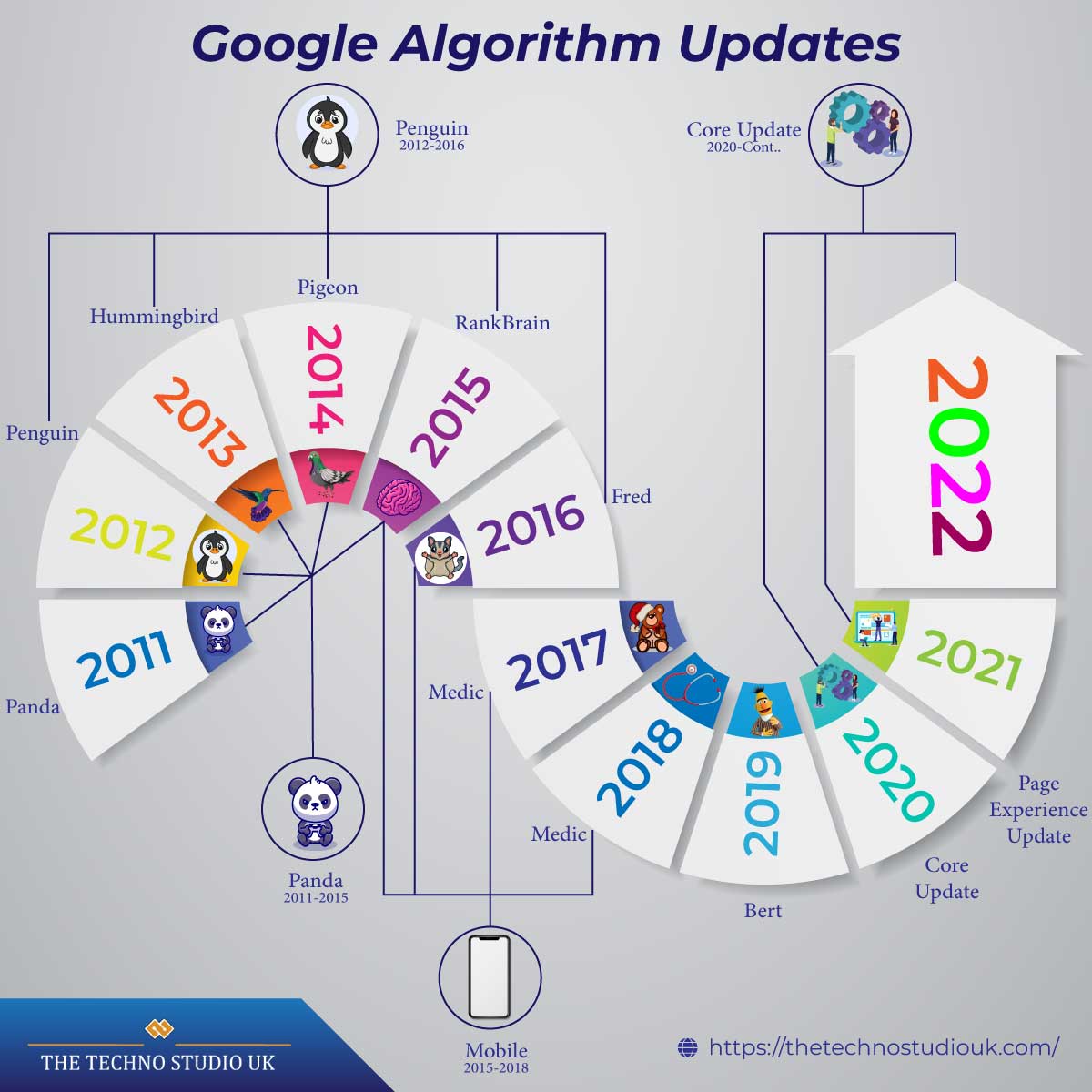
How to overcome this marketing challenge
Always monitor Google: Madi recommends staying on top of all announcement directly from Google Search Central and trying to anticipate the impact as changes occur. Some of it involves second-guessing and relying on what Google have done in the past to help predict the future:
"Our team tracks small changes we see in rankings, the search engine results page, and Google Business Profile design to anticipate what we think Google will do next."
Not only do BluShark Digital monitor these changes but they write openly about what the changes mean for their clients. When Google launched the Vicinity Update in December 2021, the agency wrote about what they observed in the SERPs and local three packs:
Google themselves suggest that marketers shouldn't worry about the algorithm because it's constantly being updated and impossible to back-engineer. But with so much riding on these algorithms it's difficult to not worry about it!
7. Feeding the Beast
Continually coming up with content is one of the most challenging aspects to any marketers role. Whether it be website blog content, social content, email content, etc - content is the fuel that powers each marketing activity.
Bhargav Bavarva is the Founder of digital agency NextPinnacle and says:
"Creativity is essential in marketing. Developing fresh content, titles, and images that are optimized to reach target audiences is a fun and interesting job that tests a marketer's creative and analytical skills, but it may get tiring after a while."
Sometimes you just need an ideas resource. A report from Upland Software found that two-thurs of marketeres don't have a good process for gathering content ideas and 39% of marketers said it was difficult coming up with content ideas on a regular basis.
How to overcome this marketing challenge
Use a data-driven content strategy: Rather than guessing what content to create each time, look at all your previous content and find out what performs best. Use these data insights to then shortcut your strategy and do more of the things that work.
For example, if you're looking for blog article ideas, use the Keyword Tracking Tool to find out what keywords your existing blogs are ranking for and what position. You can also use this tracking methodology on competitor sites to find out what works for them too!
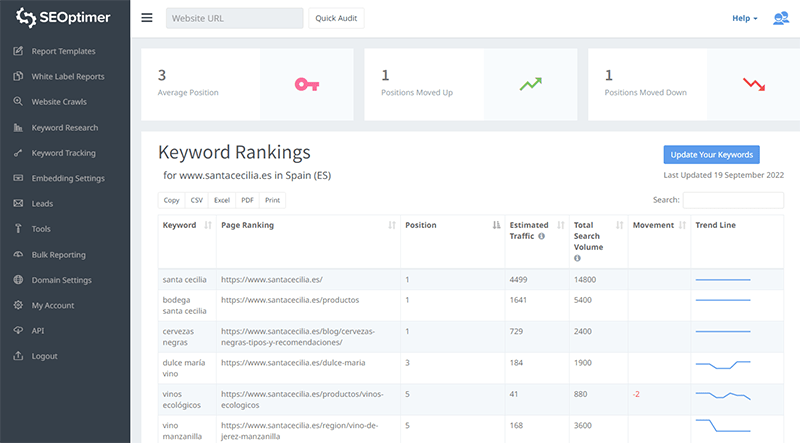
Trinity Owen, Owner of The Pay at Home Parent says that these days, the need for more video content can be an additional challenge facing marketers who are well-versed at writing long-form content but lack the talent and experience to shoot, edit and publish videos.
"As a content marker, one way I have been solving this challenge is by publishing YouTube videos based on my top-performing articles. Since video creation is not my strong suit, I have hired freelancers to turn articles into engaging videos that I can embed in my content. "
This is a great strategy and not only improves the experience for readers on an article who may prefer video but also generates new website traffic from YouTube.
Bonus resource: SEOptimer's Ultimate Guide to Content Production.
8. Staying up to Date
As already highlighted in this article, digital marketing is in a constant state of flux with new channels, new media types and new trends emerging all the time.
Kamyar Shah is the CEO of World Consulting Group and believes this is a significant challenge for anyone in marketing. Kamyar says:
"Marketing is already such as fast-paced industry that sometimes you just have to jump in where you can. However, when people aren't properly trained, they won't be able to do their jobs properly."
This is actually a crucial point because under-trained staff can be disastrous for your organization.
How to overcome this marketing challenge
Put someone in charge of staff training: Kamyar suggests that someone in your organization needs to be in charge of staff training. This doesn't mean a dedicated training person but rather someone should have the responsibility/KPI to ensure everyone is trained adequately and that there is a culture of continued learning, especially in a fast-paced industry such as digital marketing.
Another way to stay up to date with all the changes in the industry is to subscribe to digital marketing blogs. But which one is good? Thankfully we've put together an extensive list of the best blogs for marketing agencies.
9. Hiring the Right People
Hiring has always been a huge challenge but it's been made even harder during The Great Resignation where an estimated 4.4 million Americans left their jobs in a single month in 2021:
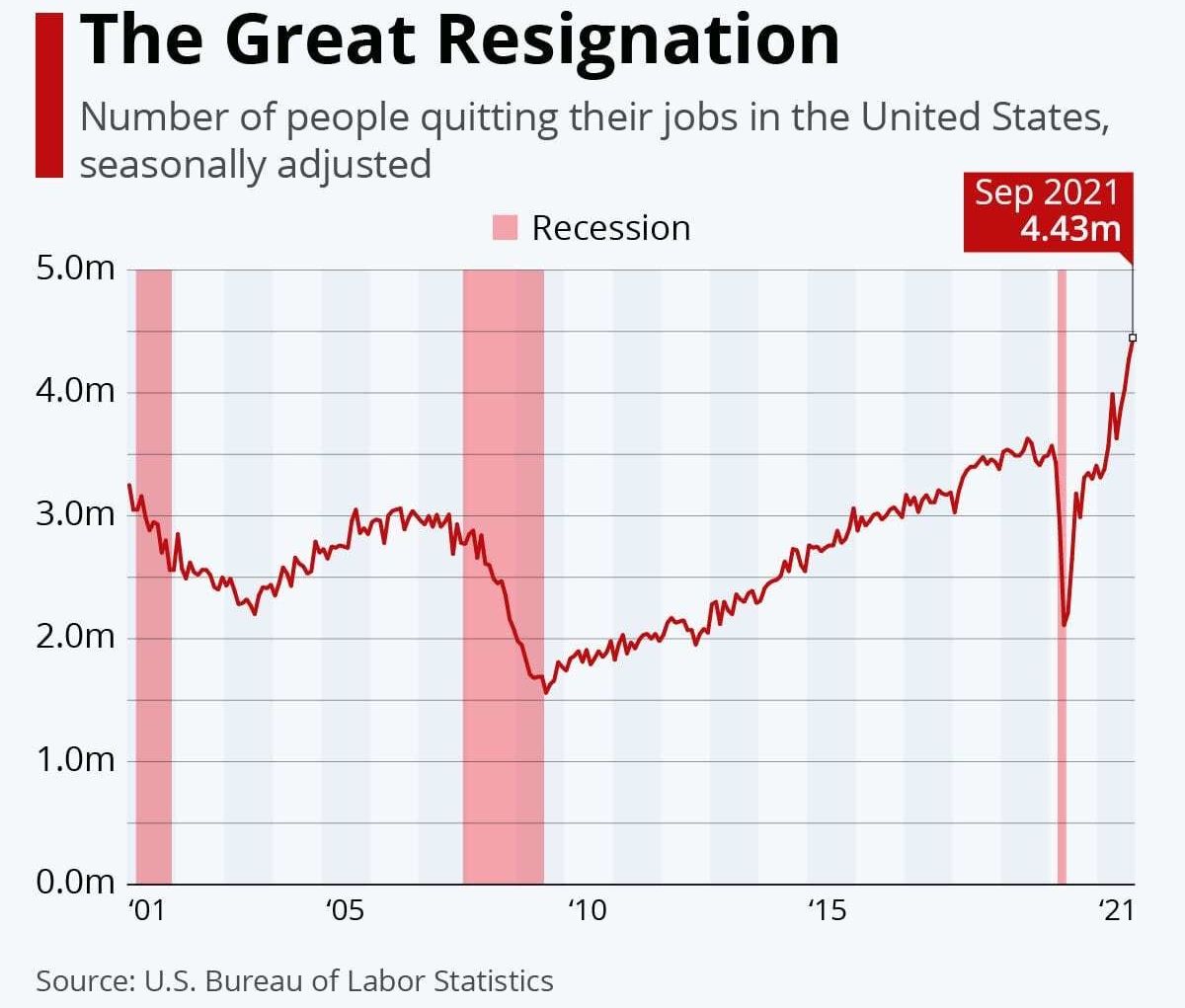
Most Marketing Managers have the responsibility to grow their marketing team in order to increase output and business performance. Despite the fact that its significantly more difficult to find marketing talent nowadays, there are also a multitude of existing factors to take into account which compound this challenge such as whether you:
- Hire a dedicated resource or outsource the role to an agency or freelancer
- Hire a specialist in a single field (ie: SEO) or hire a digital generalist
- Hire a full-time, part-time or casual resource
- Hire a co-located, hybrid or fully remote resource
But in a tight job market, being picky with talent could leave you with zero prospects.
How to overcome this marketing challenge
Prioritize the skills you need for right now: The job market is cyclical. It is absolutely a candidate market at the moment however it won't be forever. So hire the skills you need to fulfil your work objectives in the short term.
Once the market corrects, you can revisit hiring in the near future. The worst thing you can do at the moment is waste precious time and energy trying to identify the impossible candidate.
10. Generating more Leads
Last but not least is the challenge of lead generation. If you run a digital agency you should definitely check out our recent Agency Lead Generation guide. It's packed full of ideas for how you can grow your agency leads and build a sustainable and profitable digital agency.
Without a focus on lead generation, you will struggle to grow and be in vulnerable position if any client churns. But lead generation is not easy. It's very time consuming and for small businesses, time = money.
How to overcome this marketing challenge
Turn your website into a lead generation machine: SEOptimer's Embeddable Audit Tool is the perfect lead generation strategy for digital agencies. The tool can be embedded within a few minutes into your agency website and once installed, captures new leads every time a new visitor requests a site audit. Lead details are captured and emailed directly to you or can be pushed into your CRM pipeline.
Over 2,000 agencies rely on SEOptimer to drive their lead generation this way. In fact the tool has generated over 200,000 new business leads for agencies worldwide!
Next Steps
Thanks to all these marketing leaders for sharing their marketing challenges and solutions.
We write these articles to help benefit the greater marketing community so we can learn together and adapt to the changing behaviors and trends. If you'd like to be featured in one of our future articles, please reach out on Twitter @seoptimer.
